The oceans on Earth are vast, covering about 70% of the surface area, but humans still know less than 5% of the oceans. The deep sea seems to be another mysterious world, hiding countless incredible and bizarre creatures, and many life forms even subvert human cognition of biological structure and evolution.

Longnose chimaera
Today, I will take you to take stock of the top ten most bizarre marine creatures in the world, including: fierce-looking wolffish, carpet sharks with flat bodies like carpets, spider-like tall crabs, giant isopods known as "deep-sea armored beetles", sword-nosed sharks with "saw mouths", water bears that can survive in extreme environments, strange-looking sunfish, vampire squids that seem to come from science fiction movies, terrifying viperfish, swallowing eels known for devouring prey, and long-legged bullfish with super long tentacles.
And this is just the tip of the iceberg. Don't forget that more than 95% of the ocean area has not yet been explored by humans. We can't imagine how many strange and even beyond-common-sense life forms are hidden there. Perhaps, the deep sea is the place on Earth that is closest to the "alien world".
1. Wolffish
Wolffish is a large predatory fish that lives on the seabed. It is often mistaken for moray eels or conger eels in appearance, but it is actually a unique branch of catfish. The most representative of them is the gray wolffish living in the Atlantic Ocean, also commonly known as "flower loach". The Bering wolffish is mainly distributed in seabed caves, rock cracks and near coral reefs. Its range of activities is relatively limited, and it cannot swim freely in the sea like most fish.
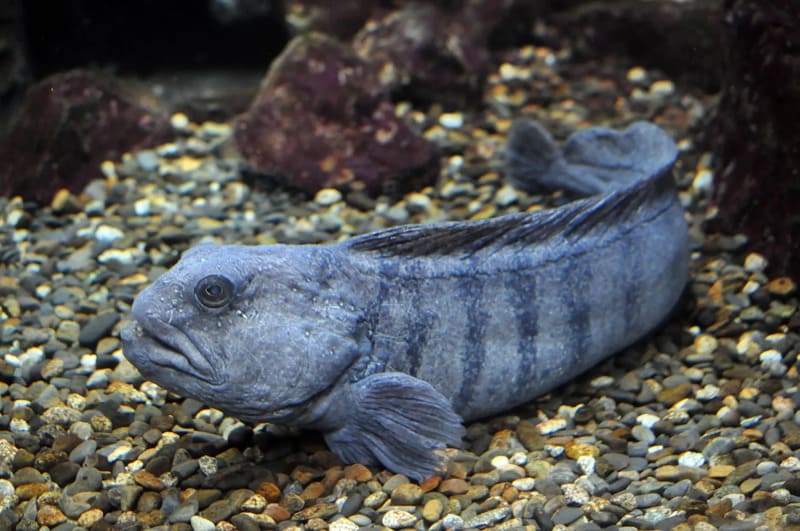
This type of fish has a small dorsal fin and no pelvic fins. It "walks" on the seabed with only a pair of well-developed pectoral fins. The pectoral fins are like their "limbs" to help them crawl between rocks and the seabed. Wolffish are typical nocturnal animals. They usually hide in caves to rest during the day, start to look for food in the evening, and return to their hiding places again in the morning.
2. Carpet Shark
Carpet shark is a bottom-dwelling shark with a body size between 1.2 meters and 3 meters. It is known for its mottled skin and tentacles with barbs. These unique features allow it to perfectly blend into the gravel or coral background of the seabed, almost imperceptible to the naked eye. Its most notable ability is its superb camouflage ability, which allows it to "seamlessly connect" with the surrounding environment, achieving the effect of "fish hiding in the ground".
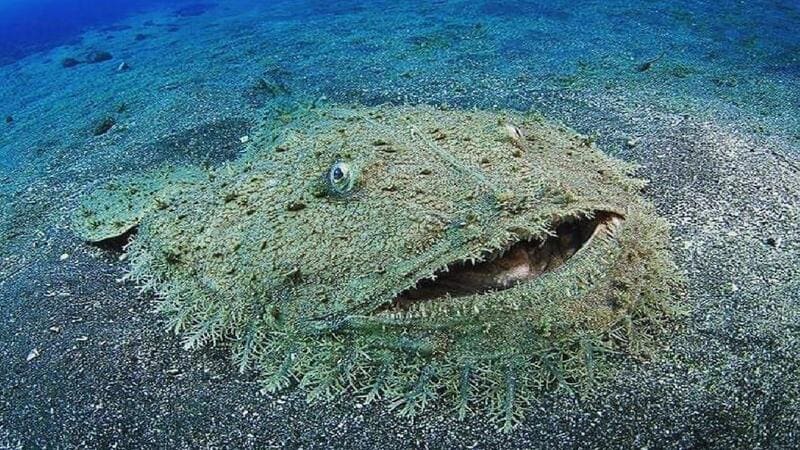
As a typical ambush predator, the carpet shark is extremely patient and cunning. It usually lurks quietly on the seabed. Once prey approaches, it will attack in an instant and quickly swallow it into its mouth. It is almost not picky about the type of food, and any prey that enters the attack range may become its prey. What is even more surprising is that it has a very strong digestive ability, and can easily handle even prey of similar size to itself.
3. Stilt crab
Stilt crab, also known as Gan's giant crab, belongs to the class of soft armor, the order of decapods, and the family of spider crabs. It is a representative member of the genus Macrochelys. Its size is amazing. When its claws and legs are fully extended, its length can reach more than 3 meters. If it stands upright, its height can even exceed 1 meter. It is classified as one of the largest arthropods in existence.
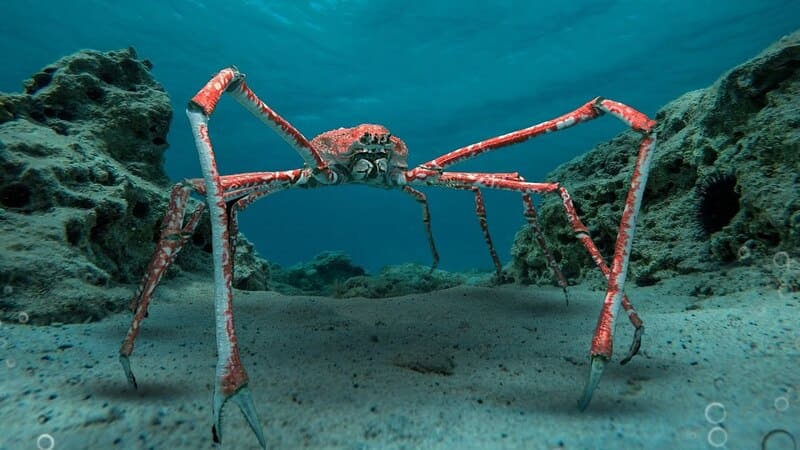
In order to adapt to the living environment of the deep seabed, the stilt crab has evolved extremely slender legs and pointed toes at the end. This special structure not only expands its stride, but also enhances its stability and grip on the seabed. It is this slender and pointed structure that allows it to walk freely in complex terrain such as mud or rocks, and it can be called a natural "deep-sea walker".
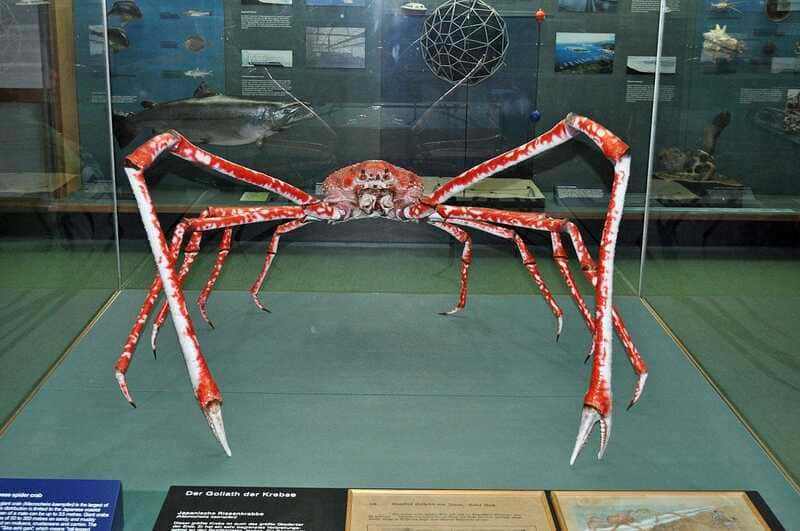
From a physics point of view, the limb structure of the stilt crab is a good reference for adapting to low gravity or complex ground environments. If humans want to walk on low-gravity celestial bodies such as the moon in the future, they may refer to the gait and foot structure of the stilt crab to design wearable equipment that is more suitable for the space environment, such as special space shoes with pointed soles.
4. Giant Isopod
Giant Isopod, also known as Giant Deep-Sea Isolates or Giant Isopods, is the largest known isopod, belonging to the Arthropoda, Isopoda, and Isopodidae. This deep-sea creature looks like an enlarged version of a woodlouse or a terrestrial woodlice, and is often called a "deep-sea crustacean monster."

Giant Isopods are known for their wide range of diets, mainly carnivorous, and usually feed on animal carcasses that sink to the bottom of the sea, such as whales, squids, fish, etc., and are truly "deep-sea scavengers." In addition to cleaning up debris, they sometimes actively prey on some slow-moving or weakly defensive marine organisms, such as aquarium/sea-cucumbers.html">sea cucumbers, sponges, nematodes, and radiolarians.

Although they look tough and mighty, they move very slowly and are typical deep-sea slow-living species. However, it is worth marveling that the giant isopod has an amazing ability to withstand hunger. In an environment with an extreme lack of food, they can survive for up to five years with an extremely low metabolic rate, and can maintain their lives even without eating. They are truly "masters of deep-sea survival."
5. Swordfish
The European swordfish, also known as the European swordfish and the goblin shark, is the only existing species in the swordfish family and can be called a mysterious representative of the deep-sea world. They often live in deep sea areas where sunlight is difficult to reach, usually in waters below 200 meters deep.

The most notable feature of this shark is its protruding long snout structure, which covers the upper jaw like a sword. It not only covers its sharp and dense teeth, but also contains a large number of electro-sensory organs that can be used to detect weak bioelectric signals of prey. The body surface of the European sharpnose shark is light pink, but due to the refraction of light in the deep sea environment, it often looks darker or even black in the water.

They attack in an extremely fast manner, and quickly capture prey with their powerful protruding jaws. They are an efficient deep-sea predator. The distribution range of the European sharpnose shark includes the coast of Japan, parts of the Indian Ocean, and the deep sea waters around South Africa. Because of its strange appearance and rare appearance, it is also known as the mysterious character among the "living fossil" sharks.
6. Water bears
Water bears, also affectionately called "Little Beauty", are a general term for microscopic organisms in the phylum Tardigrades. Currently, more than 900 species have been recorded, many of which are widely distributed globally. Water bears are extremely small, with the smallest being only about 50 microns and the largest being only 1.4 mm. They must be observed clearly with the help of a microscope.
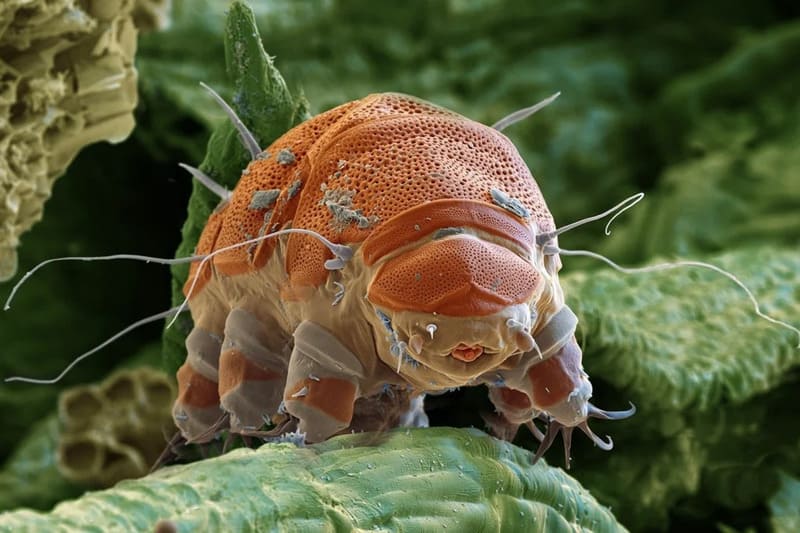
Their body surface is covered with a thin layer of water film, which not only helps to keep them moist and prevent the surface from drying out, but also allows them to absorb oxygen through the water film for breathing. When the environment is extremely dry or deteriorating, water bears will quickly enter a protective mechanism called "cryptobiosis" - they will shrink their bodies into a barrel shape, lose water, and enter a state where life activities are almost completely stopped, but they still survive tenaciously.
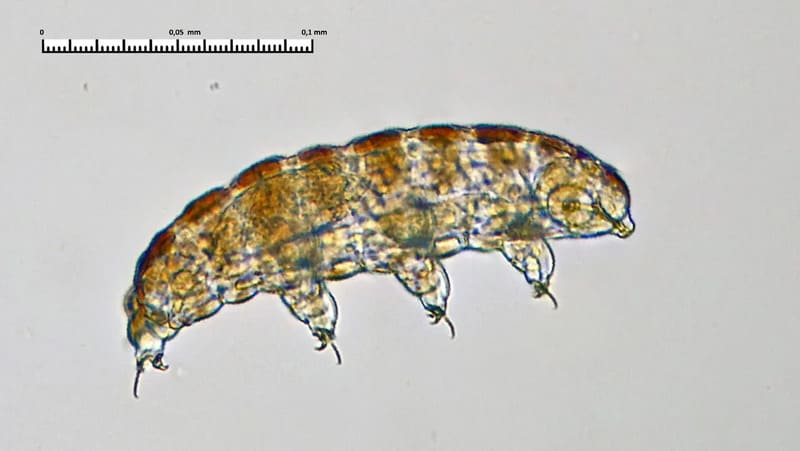
This extreme tolerance allows tardigrades to survive in a variety of harsh environments, including extreme low temperatures, boiling water and high temperatures, severe dehydration, vacuum environments, and even strong radiation. In space experiments, they even successfully "traveled" through the radiation and low pressure of space without protection, and can be called one of the most resilient "super creatures" on Earth.
7. Sunfish
Sunfish (scientific name: Mola mola), also known as manbo fish and head fish, is one of the representatives of oceanic fish under the Molidae family, and is famous for its unique appearance. They are short and thick, and the back half of the body is suddenly cut off after the towering triangular dorsal fin and anal fin, presenting a peculiar appearance of "missing tail". The fish body is flat on both sides, with tough skin, a small mouth, and teeth fused into a beak-like structure, which looks very strange.

The most well-known common sunfish (Mola mola) is huge in size, generally gray or light brown in color, with a maximum length of 3.3 meters and a weight of more than 1,900 kilograms (about 4,000 pounds), making it one of the heaviest bony fish in existence.
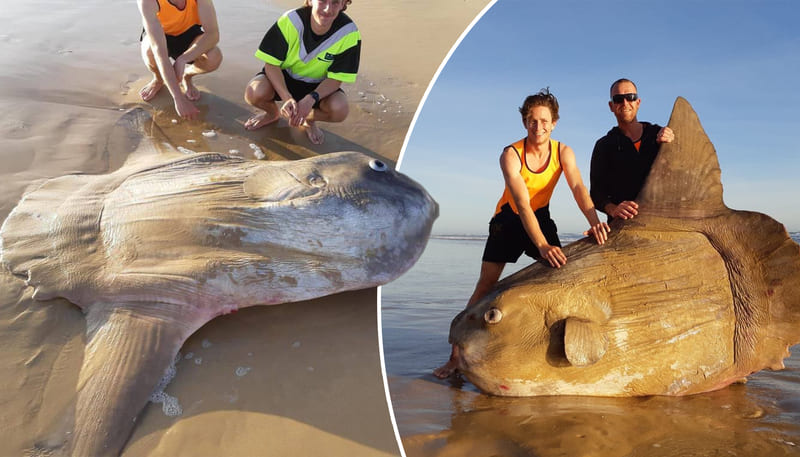
Sunfish are widely distributed in temperate and tropical waters around the world, and are also often found in my country's South China Sea, East China Sea and other sea areas. They usually live in near-shore surface waters and are typical large pelagic fish.
8. Vampire Squid
The vampire squid, also known as the vampire squid or ghost octopus, is a mysterious deep-sea creature that looks like it swam straight out of a midnight thriller movie. Its soft, jelly-like body is more like a jellyfish than a traditional squid or octopus. It has a pair of large ear-like fins, which are actually fins that help it swim and are very recognizable.
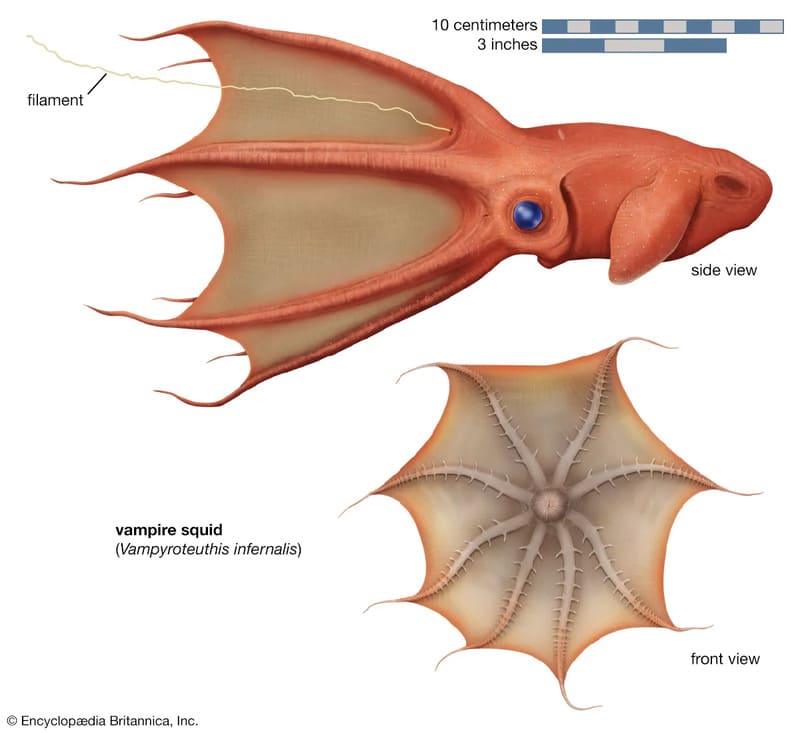
The most eye-catching feature of the vampire squid is its large sapphire eyes. Although it is only about 15 cm long, its spherical eyes are almost the size of a large dog's eyes, making it one of the largest known animals in terms of eye-to-body ratio.

This creature is not slow, in fact, it swims very fast, accelerating to two body lengths per second in 5 seconds. When faced with a predator threat, it can even make a sharp turn and nimbly get rid of the enemy. Its fins are used for paddling like penguins or turtles, allowing it to move flexibly and gracefully in the darkness of the deep sea.
9. Viperfish
Viperfish is a typical deep-sea luminous fish living in warm waters. It is small in size but very distinctive. They have a slender body and flat sides, and adults are usually less than 35 cm long. Viperfish have large heads and eyes, short snouts, and large, slightly angled mouths, which make them look quite fierce.
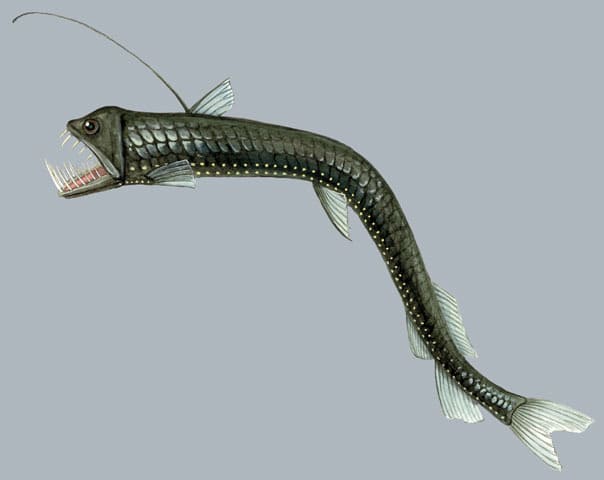
One of its most notable features is its pair of extremely sharp fangs, especially the fangs on the lower jaw that bend backwards and almost touch the eyes. The lower jaw of the viperfish also has a short whisker, and the first dorsal fin ray is as thin as a thread and is located near the end of the pectoral fin.
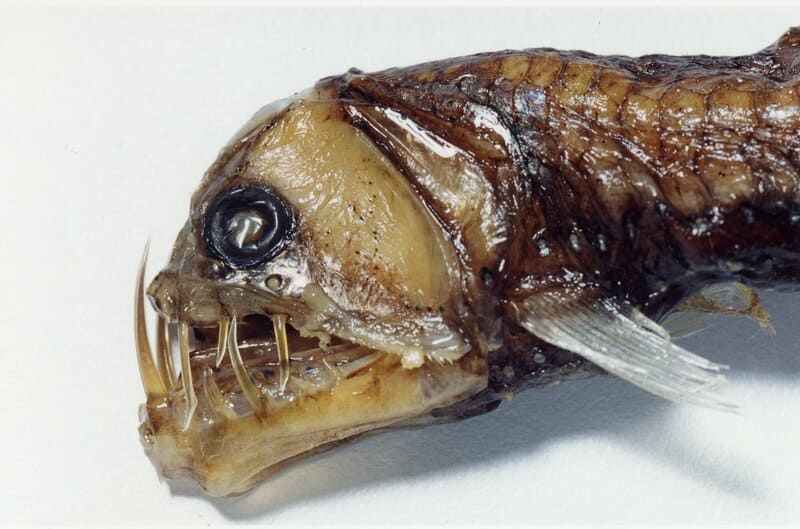
As a beast in the deep sea, the viperfish is an excellent predator. They attract prey with light-emitting devices in the dark seabed, then pounce on the target at a very fast speed and nail it firmly with their fangs, leaving the prey with almost no chance of escape.
10. Gulper Eel
Gulper Eel is a typical deep-sea fish, famous for its peculiar appearance. The name usually refers to two different fish, one of which can reach 1.8 meters (about 6 feet) in length, while the other is relatively small, only about 75 centimeters (30 inches) in length. They are widely distributed and live in the deep sea areas of almost all oceans in the world, and can live at depths of 1,500 to more than 1,800 meters.

The most eye-catching feature of the swallowing eel is its exaggeratedly large mouth. Unlike most fish, it does not have a flexible upper jaw, but relies on an extremely loose lower jaw connected to the head, and the mouth is almost never completely closed. This structure allows it to swallow prey larger than its own body and survive even in the scarce resource environment of the deep sea.

Other weird marine creatures:

Roboastra gracilis | A tiny sea slug that is only 2–2.5 cm (0.78–0.98 in) long and can be found in the tropical western Pacific Ocean.

Sea Pens | These feather-like, social invertebrates live in shallow and deep waters from the polar oceans to the tropics.

Glaucus atlanticus | Known as a blue sea dragon, this creature rarely grows longer than 3 cm and has been recorded in the Atlantic, Indian, and Pacific Oceans.
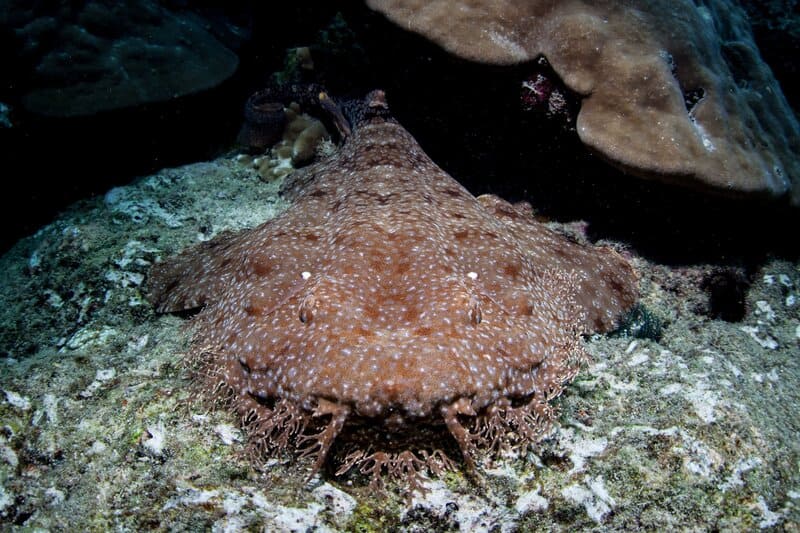
Spike Wobbegong | This fish is a type of carpet shark that inhabits shallow coral reefs in northern Australia, New Guinea, and nearby islands.
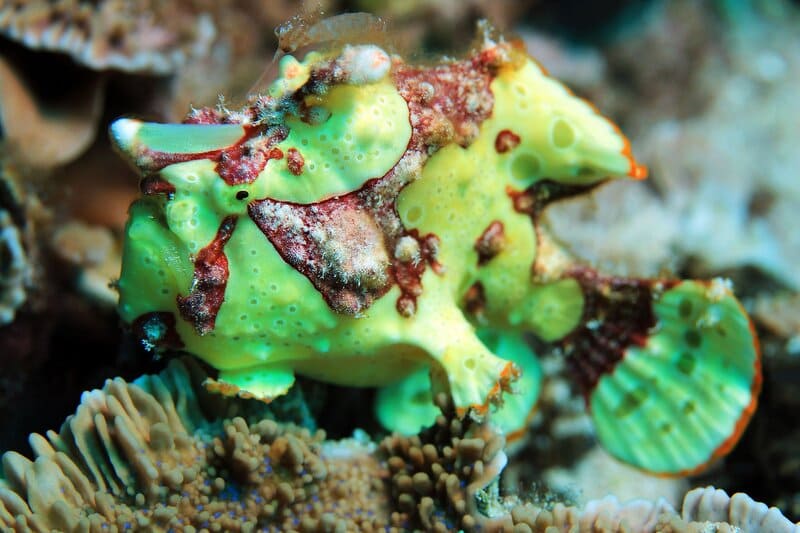
Clown Frogfish | This creature can change color depending on its environment and lives in tropical waters in the Indo-Pacific region.
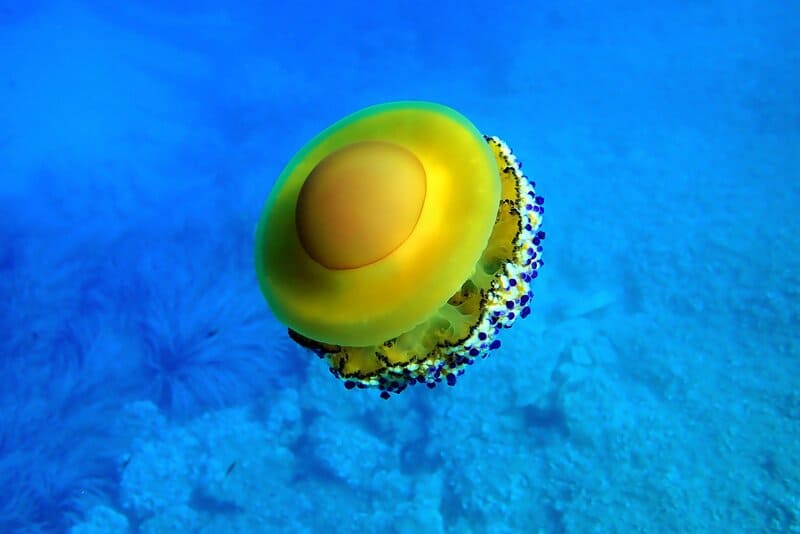
Fried Egg Jellyfish | This aptly named cold-water jellyfish is quite large, reaching up to 60 cm in diameter and with tentacles up to 6 m (19.7 ft) long. Although not abundant, it is found in many ocean regions around the world.
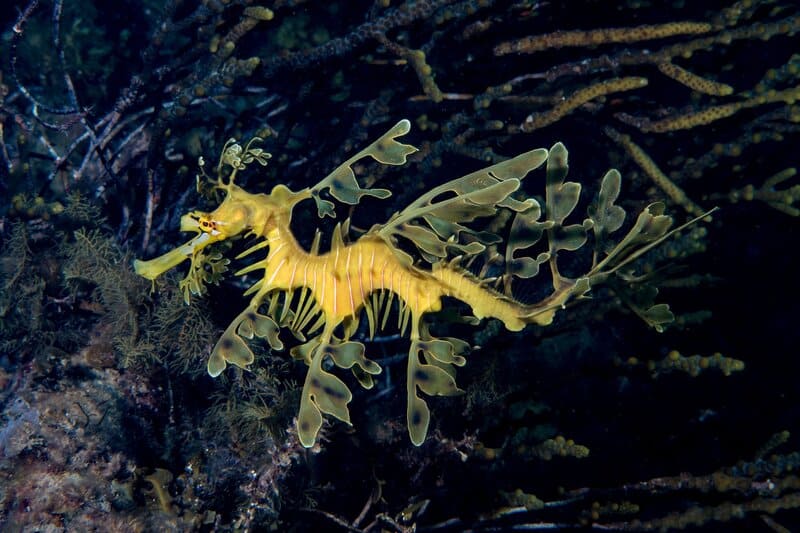
Leafy sea dragons | Leafy sea dragons are good at camouflage and live on the southern and western coasts of Australia.
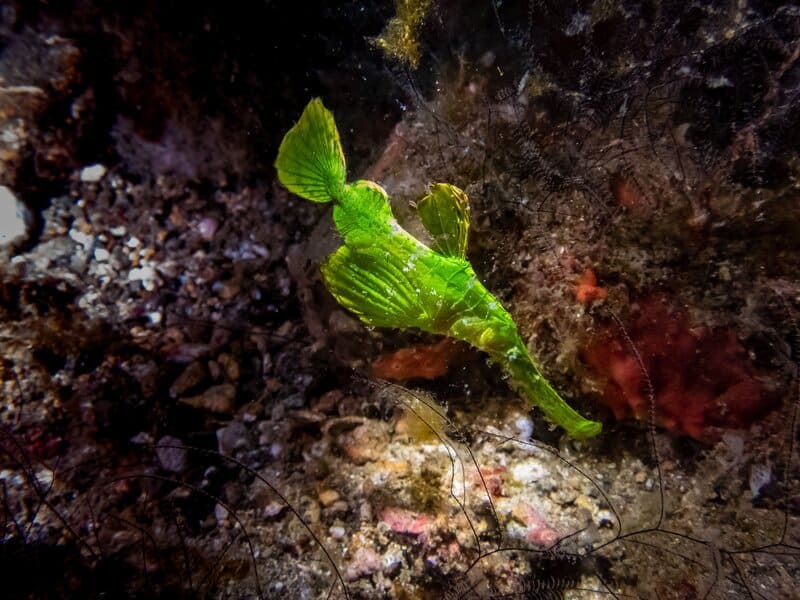
Halimeda ghost sea dragon | This uncommon species lives in the Indian Ocean and the western Indo-Pacific Ocean and is related to sea dragons and seahorses.
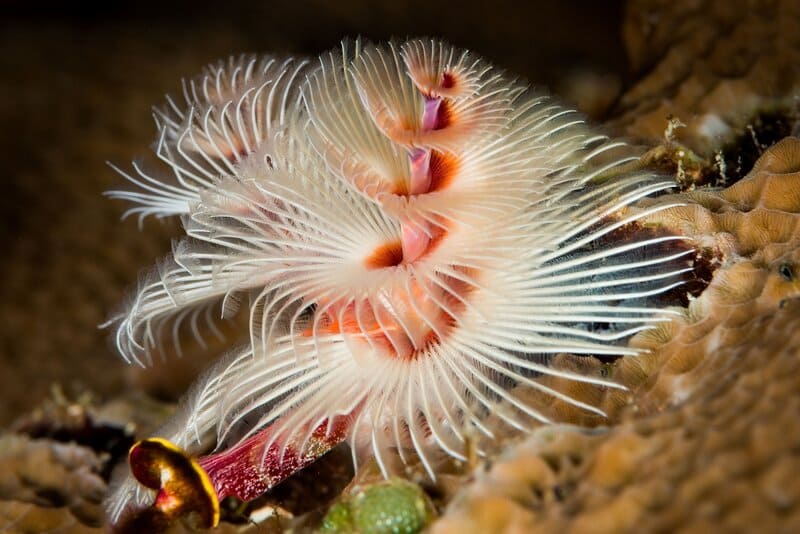
Christmas tree worm | Spirobranchus giganteus is a tube-shaped polychaete worm found from the Caribbean to the Indo-Pacific Ocean.
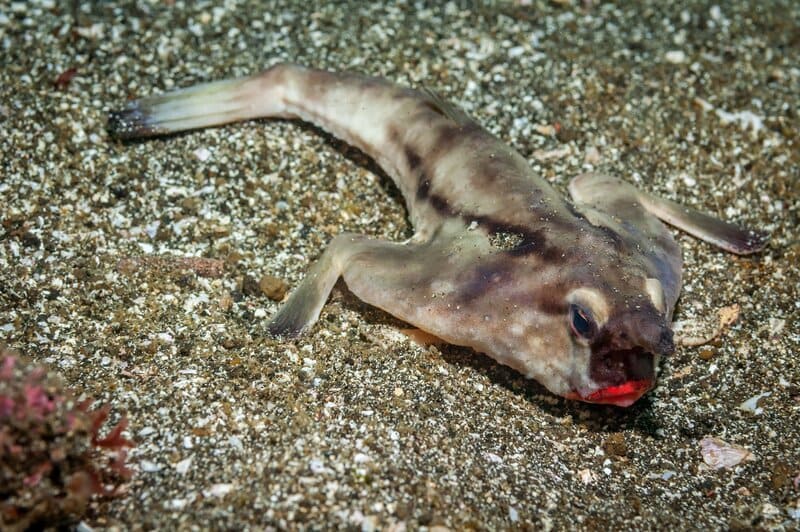
Red-lipped batfish | This strange-looking fish lives near the Galapagos Islands and Peru
The top ten weirdest marine creatures in the world are mainly based on the appearance, behavior and other related information of each marine creature, and are recommended by referring to the relevant rankings/lists on the Internet. The list is for reference only to help you understand what strange creatures are in the sea. If you have any questions, please comment/criticize at the end.
animal tags:
We created this article in conjunction with AI technology, then made sure it was fact-checked and edited by a Animals Top editor.